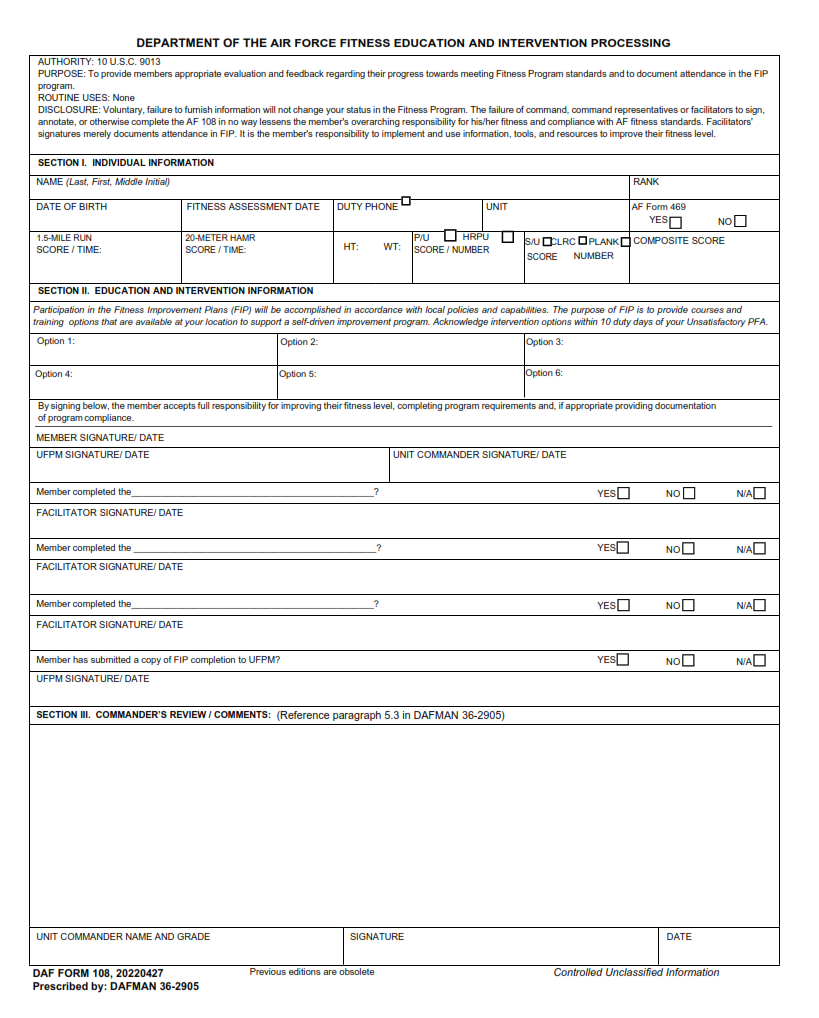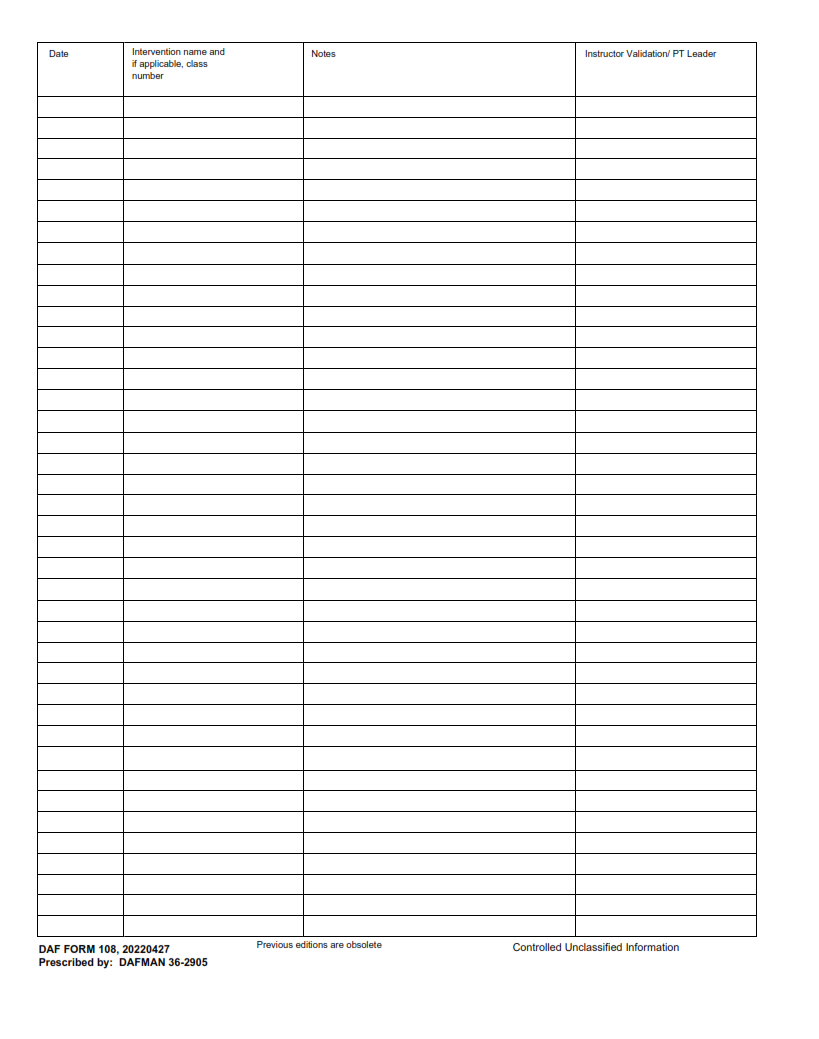FINDERDOC.COM – DAF Form 108 – Department Of The Air Force Fitness Education And Intervention Processing – The Department of the Air Force (DAF) is committed to maintaining a healthy and fit workforce. The DAF Form 108, also known as the Fitness Education and Intervention Processing form, is an important tool in helping ensure that all air force personnel meet the required physical fitness standards. The form serves as a comprehensive resource for both airmen and their supervisors, outlining expectations for physical fitness performance and providing guidance regarding corrective action if necessary.
Download DAF Form 108 – Department Of The Air Force Fitness Education And Intervention Processing
| Form Number | DAF Form 108 |
| Form Title | Department Of The Air Force Fitness Education And Intervention Processing |
| File Size | 344 KB |
| Date | 27-04-2022 |
What is a DAF Form 108?
A DAF Form 108, also known as the Department of the Air Force Fitness Education and Intervention Processing form, is a document used by the United States Air Force to assess an individual’s mental health status. The form is intended to be filled out by a mental health professional or other qualified healthcare provider after an assessment has been conducted.
The DAF Form 108 includes questions about an individual’s physical and emotional health, as well as their attitude toward physical fitness activities. It is designed to provide insight into how an individual responds to physical challenges, including any potential risks that may be associated with participating in such activities. Additionally, the form provides information on diagnosis and treatment options for any conditions that may exist in order to better ensure proper medical care is provided. All information gathered via this form is confidential and must be kept secure within the confines of the military system.
What is the Purpose of DAF Form 108?
The Department of the Air Force (DAF) Form 108 is a form used to track the progress and performance of airmen in physical training. This is done by tracking their weight, body fat percentage, waist circumference, resting heart rate, and other health-related variables. DAF Form 108 allows commanders to ensure that their airmen are meeting fitness standards for military service and staying healthy.
In addition to tracking physical fitness levels, DAF Form 108 also serves as an educational tool. It helps commanders monitor how well their personnel understand the importance of proper nutrition and exercise. On this form, information such as nutrition knowledge scores can be recorded so that any areas needing improvement can be identified quickly. This helps commanders provide essential guidance on how to improve overall health and wellness among their airmen.
Where Can I Find a DAF Form 108?
DAF Form 108 is an important document for members of the US Air Force. It serves as a form to record valuable information regarding fitness, education and intervention processing. The form is used to track progress and evaluate the overall health of an individual.
The form must be completed by individuals who are trying to meet their physical fitness requirements set forth by the Department Of The Air Force. This includes completing any required physical activities or educational programs that may have been prescribed by their doctor or unit commander. To access and fill out DAF Form 108, individuals can visit their local military installation’s personnel office or download it directly from the Department Of The Air Force website. Once completed, the form should be submitted either in-person or via mail to the appropriate address listed on the form itself.
DAF Form 108 – Department Of The Air Force Fitness Education And Intervention Processing
The Department of the Air Force Fitness Education and Intervention Processing (DAF Form 108) is an important document used by the U.S. Air Force to assess members’ physical fitness level and determine if they are at risk for health issues or need additional support. The form consists of two parts: a self-assessment questionnaire and a medical evaluation checklist.
Through the self-assessment questionnaire, members are asked to provide details about their lifestyle habits, such as diet, exercise, sleep pattern, alcohol consumption and drug use. This information helps identify potential health risks that require medical attention or further intervention from medical professionals or other service personnel.
The second part of the form provides a comprehensive review by Medical Officers who evaluate individual member’s physical condition against established standards for their age group and gender.
DAF Form 108 Example

